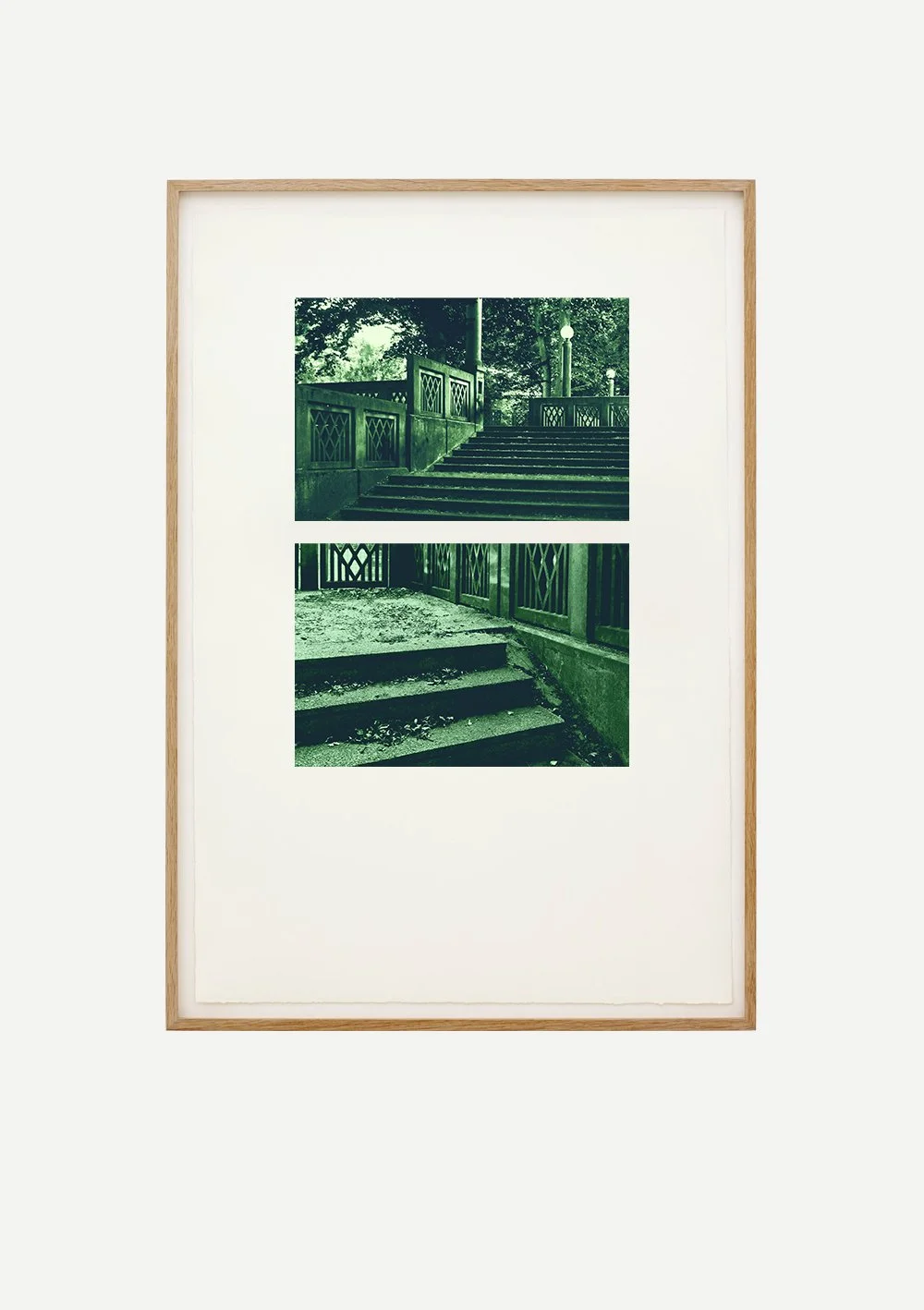Work on paper and sound installation. Digital track, 17:30.
matter into matter
Click here to listen to Matter into Matter.
Matter into Matter is an investigation into the systemic functions of concrete infrastructure by translating architectural form into sound. The work centres on a brutalist concrete stairway in Park Antona Codellija, Ljubljana, digitally captured using open-source photogrammetry software.
This process produced a 3D model of the stairway, from which vertex data was extracted and databent, converted into an audio signal using signal-processing techniques. This translation from structure to sound foregrounds the embedded logics of the stairway: its gradients, repetitions, and interruptions become audible. Rather than viewing the stairway as a static object, the work reveals it as a system of relations in organising movement and directing force.
The sound installation is accompanied by three monochrome photographic prints that extend the work’s focus on attention and structure. One image is a diptych of the stairway from two slightly offset perspectives, highlighting the modulation of form across a shallow incline. The other two isolate concrete lamp posts situated along the stair’s perimeter.
These images draw attention to the designed elements that guide bodily movement and visual orientation, emphasising how the stairway operates as a perceptual and spatial instrument. Together with the sound, these photographs reframe the stairway as a sensory device embedded within infrastructural systems.
A monochrome green treatment is applied to all three photographs, selected for its physiological effect on human vision. Green is the hue to which the human eye is most sensitive, allowing for increased visual clarity and attentional focus. This chromatic intervention heightens awareness of architectural detail while also interrupting conventions of photographic realism. It marks the images as constructions, not representations, and repositions them as analytical tools within the work’s broader system.
The stairway itself belongs to a wider history of rationalist infrastructure shaped by post-war Yugoslav architectural thought. Its geometric regularity and material austerity reflect broader logics of planning grounded in Cartesian design principles. These logics persist in contemporary infrastructural environments, often operating beneath the threshold of conscious perception.
Please note: Digital images of the works may not accurately reflect their true colour. Due to screen calibration and settings, colours may appear more saturated or contrast-rich. The green hues are relatively muted (close to a grey-green).


